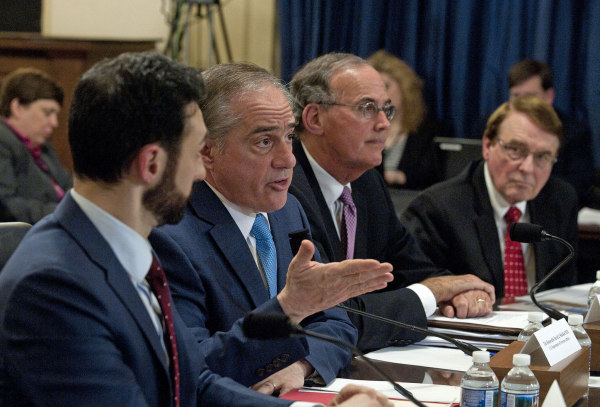

For too many in media and government who talk about bolstering accountability in the Department of Veterans Affairs, the notion is abstract; a talking point that sounds great for pontificating on how veterans ought to be treated. No matter how many times the public hears a congressional or agency official give assurances that change is coming in VA, it remains impossible for many veterans, in their everyday experiences with VA, to reconcile those assurances against continued evidence of a broken system.
A system where, even in today’s post-Phoenix VA era, a clerk at an admissions desk at the Washington, D.C. VA won’t let a veteran looking for help interrupt her breakfast at the desk. A system where a paralyzed veteran still cannot get a wheelchair ordered timely at the Richmond VA Prosthetics Office due to veteran-unfriendly policies. Both of these things happened to me personally. A system where the failure to fire underperforming employees and senior managers is all too often justified by the notion that “you can’t fire your way to excellence.”
I beg to differ. Fostering sustainable cultural change comes from cutting out the factors hurting an organization, like underperforming employees. Former General Electric CEO Jack Welch achieved excellence by having managers divide their employees every year into three categories: the top 20%, the middle 70%, and the bottom 10%, with that bottom 10 pushed out of the company, also known as “forced ranking.” Other well-known companies that have used a similar approach to separating high performers from low ones in the past include Ford Motor Co., Sun Microsystems, and Cisco Systems, all of which saw improved workforce potential.
Related: The One Problem That Will Make Or Break Trump’s Pick For VA Secretary »
Applying the same philosophy in today’s VA would mean about 34,000 underperforming employees would be dismissed. Not transferred or demoted or “detailed” to some temporary safe haven in a VISN office somewhere. While the idea of firing an organization into excellence does bear consequences, particularly if used over a long period, some process that allows for the timely dismissal of low performing employees when measured against their higher performing peers does have a place in this discussion where other less dramatic measures have not been effective.
The counterargument against such measures is based on the fear that sweeping terminations is tantamount to a witch hunt, which is a reasonable concern. Politics, cronyism, retaliation, and intimidation could threaten due process rights for good employees who work for unethical supervisors in a system that would allow for easier terminations, just as much as it does under today’s system. Ironically, however, it is those unethical superiors and VA employees of their ilk who have enjoyed the greatest protections under the current system, forcing good employees to tolerate a culture that shields the low performance standards, bad behavior, and moral hazard that has come to typify VA in the eyes of many. A 2005 Harvard Business Review made the case that “orced ranking is the antidote to the problems of inflated rating and the failure to differentiate that many organizations have installed to help bring the truth into the performance management process.”
Speaking of protections under the current system itself, it reportedly takes six months to a year to remove a permanent civil servant in the federal government, often times even longer, according to the U.S. Government Accountability Office. Even in cases where reasonable minds likely agree that immediate termination is warranted, VA’s civil service rules undermine accountability in the department. The fact remains over 80% of the cases filed before the Merit Systems Protection Board by VA employees result in affirmed decisions. This means a bad actor or under performer who’s been terminated is almost guaranteed to collect a few more paychecks even though a termination is likely to be upheld on appeal. Two cases in point are the VA employee who pled guilty to an armed robbery and the nurse who participated in a veteran’s surgery while intoxicated. Both individuals continued to collect paychecks instead of being fired immediately. Calling it a witch hunt doesn’t mean there aren’t witches; in this case, bad actors need to be identified and dealt with fairly and swiftly if VA culture is to improve.
The question is how. The best answer may be the one brought forth by House Committee on Veterans’ Affairs Chairman Phil Roe, who introduced the VA Accountability First Act of 2017 in late February. The bill would provide the VA secretary the unprecedented flexibility to deal with underperforming employees and reward high performers. It would also better protect whistleblowers, reduce federal pensions for convicted ex-employees, and recoup bonuses from employees who engaged in misconduct or poor performance. No bill will be a panacea for the entire accountability problem, but it’s the best measure proposed so far.
I can think of no more apropos application of education leaders Steve Gruenert and Todd Whitaker’s truism in today’s VA: “The culture of any organization is shaped by the worst behavior the leader is willing to tolerate.” Fortunately, the new VA Secretary, Dr. David Shulkin, appears ready to take measures to tolerate bad actors and under performers in VA no more, with the help of the White House and Congress, who collectively must answer to impatiently waiting veterans.
